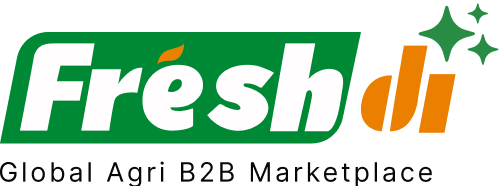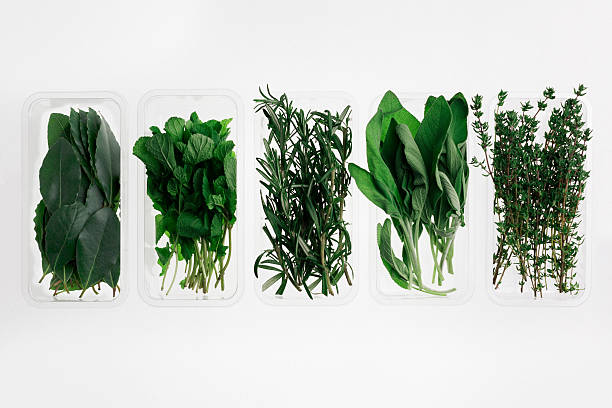Introduction – Current State of Play: The Herbs Sector in United States
If you’re in the herbs business or planning to enter it, this is the moment to pay close attention. The United States herbs market is buzzing with activity and evolving faster than ever. From changes in consumer behavior to new trade policies, there’s a lot going on that’s reshaping the way herbs are grown, sourced, and sold across the U.S.
Recent developments—like climate variability, increasing demand for organic foods, and a boom in e-commerce—are putting pressure on businesses to stay agile. Whether you’re a retailer, distributor, or foodservice operator, understanding these rapid shifts is crucial. You can’t afford to stand still in this game. Platforms like Freshdi are helping buyers stay on top of these changes by offering real-time insights, verified supplier data, and RFQ trends.
So, let’s dive deep into what’s happening in the U.S. herbs market and spotlight the top suppliers you should be watching in 2025.
Deep Dive – What’s Making Headlines? Key Recent News & Impacts
1. Explosive Market Growth
The U.S. fresh herbs market is on a tear. It was valued at around $951.9 million in 2024 and is projected to surge to $1.54 billion by 2030, clocking a CAGR of 8.4%. That’s not just healthy growth—it’s booming. This surge is fueled by rising consumer demand for natural, organic, and health-forward ingredients.
Source: Grand View Research
2. Basil & Cilantro Lead the Pack
Basil and cilantro are dominating the fresh herbs market, together making up over 65% of the global demand. This popularity drives innovation and volume in both cultivation and distribution.
Source: Grand View Research
3. Sustainability Is Not Optional
Today’s consumers want more than just flavor—they want herbs that are organically grown and sustainably sourced. This has led to a major shift in how companies approach farming, packaging, and logistics.
Source: Future Market Insights
4. Vertical Farming Is Changing the Game
Innovators like Eden Green are using vertical farming to grow herbs in controlled environments. This means year-round supply, reduced resource use, and better quality control.
5. Trade Shifts Are Reshaping Sourcing
Recent policy tweaks have led to increased tariffs on certain herb imports, forcing companies to rethink their sourcing strategies. Many are now looking inward—investing in domestic production to reduce risk.
Source: 360iResearch
6. Investments & Expansion
From retail giants to niche growers, companies are pouring money into herbs. The U.S. herbs and spices market is expected to grow from $26.76 billion in 2025 to $37.33 billion by 2035. Investments are targeting sustainable farming, innovative blends, and ethical sourcing.
Source: Future Market Insights
7. Big Brands Are Innovating
In March 2024, McCormick launched a new line of organic spice blends, appealing to the health-conscious segment. Meanwhile, Spice Jungle expanded its e-commerce operations in April 2024 to reach more home cooks and small businesses.
Source: Future Market Insights
8. Acquisitions Are Heating Up
In June 2024, Fresh Point made headlines by acquiring a major fresh herbs supplier. This move strengthens its distribution power and product line at a time when demand is peaking.
Source: Future Market Insights
Top 10 Verified Herbs Suppliers in United States – Adapting to Today’s Market
Verified through platforms like Freshdi, the following suppliers are not just keeping up—they’re leading the charge in 2025. Their reliability, certifications, and global operations make them go-to partners for businesses serious about herbs.
1. GNEE INTERNATIONAL LTD
Specializing in premium Chinese herbs, GNEE stands out for its diversified offerings, strict quality control, and commitment to sustainable agriculture.
2. DCR Harvest LLC
A trusted name in dried herbs, particularly coriander seeds. Known for reliability and consistent quality, they’re a favorite among food processors and bulk buyers.
3. McCormick & Company
One of the largest names in the herbs and spices world. Their new organic line shows a serious push toward health and sustainability.
4. Eden Green Technology
Not just a grower but an innovator in vertical farming, Eden Green provides fresher, pesticide-free herbs year-round.
5. Spice Jungle
Their expanded e-commerce platform has made it easier for small restaurants and home chefs to access premium herbs.
6. Frontier Co-op
A leader in organic and fair-trade herbs, with a strong focus on ethical sourcing and environmental impact.
7. Monterey Bay Herb Company
Offers a wide range of bulk herbs and botanicals, with certifications that appeal to health-conscious and natural product consumers.
8. Starwest Botanicals
A pioneer in the industry with over 45 years of experience. Their emphasis on purity and testing makes them a top pick for herbal medicine and therapeutic use.
9. Mountain Rose Herbs
Known for its sustainable harvesting practices, they cater to both culinary and wellness markets.
10. Pacific Botanicals
Focused on organic farming, this supplier is a reliable source of medicinal and culinary herbs grown in the Pacific Northwest.
Dynamic Ranking Note
Keep in mind, platforms like Freshdi offer dynamic supplier rankings. Their “Suppliers of the Month” or “Top Certified Exporters” lists are continuously updated based on real-time buyer feedback, RFQ performance, and market responsiveness.
Market Navigation – Strategic Responses to The Prevailing Herbs Landscape in United States
With so many changes hitting the herbs sector, businesses need to rethink their strategies. Here are some key considerations:
- Diversify Your Sources: Given the hike in import tariffs, now’s the time to look at multiple domestic suppliers.
- Invest in Organic: Consumer preference is shifting hard toward organic and clean-label products. Suppliers offering these will be in high demand.
- Leverage Vertical Farming: With climate unpredictability, vertical farming offers a stable and eco-friendly solution.
- Track RFQs: Use platforms like Freshdi to keep an eye on real-time RFQ trends and supplier availability.
For businesses sourcing from regions prone to climate disruption or regulatory changes, staying flexible is your best bet. Even slight shifts in demand can ripple through the supply chain—so stay informed, stay agile.
Conclusion – Key Takeaways for Businesses in a Dynamic Market
2025 is shaping up to be a transformative year for the herbs market in the United States. With booming demand, innovative farming, and changing trade dynamics, businesses need to be more agile than ever.
Here’s the quick rundown:
- The U.S. herbs market is projected to grow at 8.4% CAGR till 2030.
- Basil and cilantro are the reigning champs in popularity.
- Vertical farming and organic sourcing are redefining the supply chain.
- Tariff changes are pushing companies to invest in domestic sourcing.
- Top suppliers like GNEE INTERNATIONAL, DCR Harvest LLC, and McCormick are setting new standards in quality and innovation.
Platforms like Freshdi are pivotal in this environment. They help buyers track supplier performance, monitor market trends, and respond quickly to RFQ shifts.
Buyer’s Checklist for Navigating the U.S. Herbs Market in 2025
- ✅ Are your suppliers certified for organic and sustainability standards?
- ✅ Have you diversified your sourcing to mitigate tariff impacts?
- ✅ Are you using platforms like Freshdi to monitor RFQ trends and supplier reviews?
- ✅ Do your current suppliers offer climate-resilient farming solutions like vertical farming?
- ✅ Are you keeping track of consumer preference shifts, especially toward health and wellness?
Looking Ahead – The Future of the Herbs Market
The U.S. herbs market is no longer just about flavor—it’s about function, sustainability, and innovation. From AI-powered farming to blockchain traceability, the future is tech-driven and green.
As new players enter and regulations evolve, buyers who stay informed and adaptable will win. And tools like Freshdi will be your compass in navigating an often unpredictable but opportunity-rich market.
FAQs
1. What herbs are most in demand in the U.S. in 2025?
Basil and cilantro continue to lead the pack, followed by parsley, mint, and oregano.
2. How has vertical farming impacted herb supply?
It ensures year-round supply, reduces water use, and delivers fresher products with fewer pesticides.
3. Why are tariffs affecting herb sourcing in the U.S.?
Policy changes have increased tariffs on certain imports, pushing companies to shift to domestic suppliers.
4. What certifications should I look for when choosing a herbs supplier?
Look for USDA Organic, Fair Trade, GMP, and Non-GMO certifications.
5. How does Freshdi help buyers in the herbs market?
Freshdi offers real-time supplier verification, RFQ tracking, dynamic rankings, and market trend insights to help buyers make smarter decisions.
References
- Grand View Research – Fresh Herbs Market Outlook
- Future Market Insights – U.S. Herbs and Spices Market
- Time – Eden Green Vertical Farming
- 360iResearch – Fresh Herbs Intelligence
- Nutritional Outlook – Herbs and Botanicals 2024
- Freshdi – Verified Suppliers


